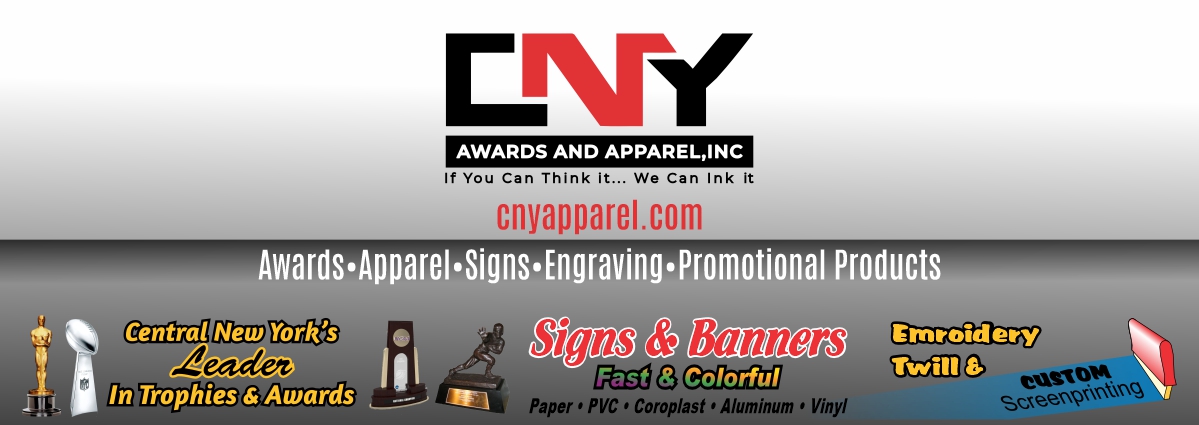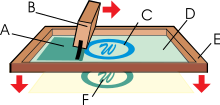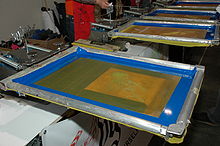CNY Awards & Apparel has been the leader in custom screen printing for over 40 years. We still remain today as the only shop to offer in-house art dept and one stop shop for all your imprinting needs.
Whether it’s 1 or 1000 and above, we are the one stop shop for all your apparel needs.
Contact Wayne (wayne@cnyapparel.com) or Mike (mike@cnyapparel.com) for your custom screen printing needs tailored to meet your specific order.
Screen printing is a printing technique that uses a woven mesh to support an ink-blocking stencil. The attached stencil forms open areas of mesh that transfer ink as a sharp-edged image onto a substrate. A roller or squeegee is moved across the screen stencil, forcing or pumping ink past the threads of the woven mesh in the open areas.
Printing technique
A screen is made of a piece of porous, finely woven fabric called mesh stretched over a frame of aluminum or wood. Originally human hair then silk was woven into screen mesh; currently most mesh is made of man-made materials such as steel, nylon, and polyester. Areas of the screen are blocked off with a non-permeable material to form a stencil, which is a negative of the image to be printed; that is, the open spaces are where the ink will appear.
The screen is placed atop a substrate such as paper or fabric. Ink is placed on top of the screen, and a fill bar (also known as a floodbar) is used to fill the mesh openings with ink. The operator begins with the fill bar at the rear of the screen and behind a reservoir of ink. The operator lifts the screen to prevent contact with the substrate and then using a slight amount of downward force pulls the fill bar to the front of the screen. This effectively fills the mesh openings with ink and moves the ink reservoir to the front of the screen. The operator then uses a squeegee (rubber blade) to move the mesh down to the substrate and pushes the squeegee to the rear of the screen. The ink that is in the mesh opening is pumped or squeezed by capillary action to the substrate in a controlled and prescribed amount, i.e. the wet ink deposit is proportional to the thickness of the mesh and or stencil. As the squeegee moves toward the rear of the screen the tension of the mesh pulls the mesh up away from the substrate (called snap-off) leaving the ink upon the substrate surface.
Versatility
Screen printing is more versatile than traditional printing techniques. The surface does not have to be printed under pressure, unlike etching or lithography, and it does not have to be planar. Screenprinting inks can be used to work with a variety of materials, such as textiles, ceramics, wood, paper, glass, metal, and plastic. As a result, screenprinting is used in many different industries, including:
- Clothing
- Textile fabric
- Product labels
- Printed electronics, including circuit board printing
- Thick film technology
- Balloon
- Medical devices
- Snowboard graphics
- Signs and displays



